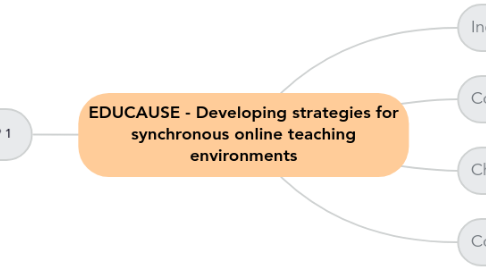
1. Dr. Diego Bonilla / CSU, Sacramento
2. Individual Student Work
2.1. Lecture time displacement (Flipping?)
2.1.1. ComS149 - Advanced Authoring (2006)
2.1.1.1. Functional Director Lessons
2.1.1.2. CDL interviews about Functional Director
2.1.2. ComS106 - Digital Media Primer (2009)
2.1.2.1. Videos with interactive Table of Contents
2.1.2.2. Digital Media Primer Lessons (2009)
2.1.2.3. Resulting student projects - DMP (2009)
2.1.3. ComS106 - Digital Media Primer (2013)
2.1.3.1. Digital Media Primer Lessons (2013)
2.1.3.2. Resulting student projects - DMP (2013)
2.2. Manipulation of Creative Commons media with Open Source Software
2.2.1. Copyright lesson
2.2.2. Digital Images
2.2.2.1. Raster
2.2.2.1.1. Open Source Software - GIMP
2.2.2.1.2. Repository - Flickr
2.2.2.2. Vector
2.2.2.2.1. Open Source Software - Inkscape
2.2.2.2.2. Repository - Open Clip Art
2.2.3. Digital Audio
2.2.3.1. Open Source Software - Audacity
2.2.3.2. Music (integrated) - Jamendo
2.2.3.3. Music (Multiple tracks) - CC Mixter
2.2.3.4. Sound effects - Freesound
2.2.4. Digital Video
2.2.4.1. Proprietary Software - Windows Movie Maker (2009-2010)
2.2.4.2. Proprietary Software - Camtasia (2011)
2.2.4.3. Prelinger Archives
2.2.5. Computer Graphics - 3D modelling
2.2.5.1. Blender (2009-2012)
2.2.5.2. Google SketchUp (2013)
2.2.5.3. Repository - TurboSquid
3. Collaborative Student Work
3.1. Crowdsourced evaluation of assignments
3.1.1. Evaluate 2100 multimedia homework assignments per semester
3.1.2. Asynchronous (2009-2012)
3.1.2.1. Anonymous peer evaluation
3.1.2.2. Facilitated by lists and code names
3.1.3. Synchronous (2013)
3.1.3.1. Identified peer evaluation
3.1.3.2. Class dynamic: Pair students for 2 consecutive peer evaluations at the beginning of class
3.1.3.3. Peer evaluation form
3.1.3.4. Peer evaluation form responses
3.2. Synchronous online small groups work
3.2.1. Divide the class in groups (even number of students per group)
3.2.2. Share homework assignments and vote for the best homework within group
3.2.3. Post results on Wiki (2009-2012)
3.2.4. Post results in Google Forms (2013)
3.3. Asynchronous online collaborative class work
3.3.1. Collective video shooting of an event at the Crocker Art Museum
3.3.2. Upload personal videos to the Google Drive and provide information about the content. Include a link for download.
3.3.3. Students download videos from the collective repository and edit them into a single short video project
3.3.4. Final student videos and feedback about the course
4. Challenges and areas of improvement
4.1. Peer evaluation
4.1.1. Better for well defined knowledge, not so good for ill formed knowledge
4.1.2. Facilitated by our use of Google Services
